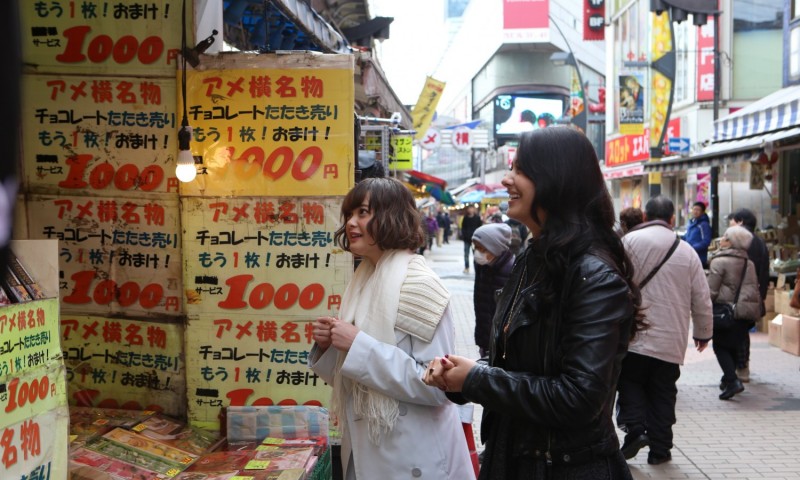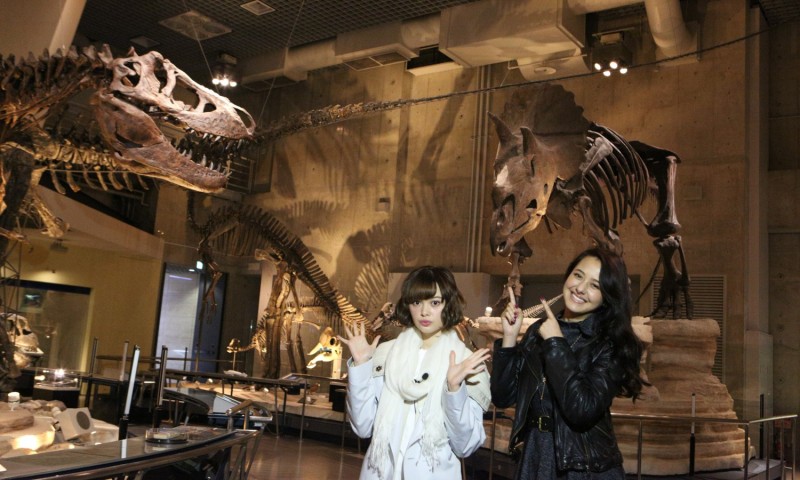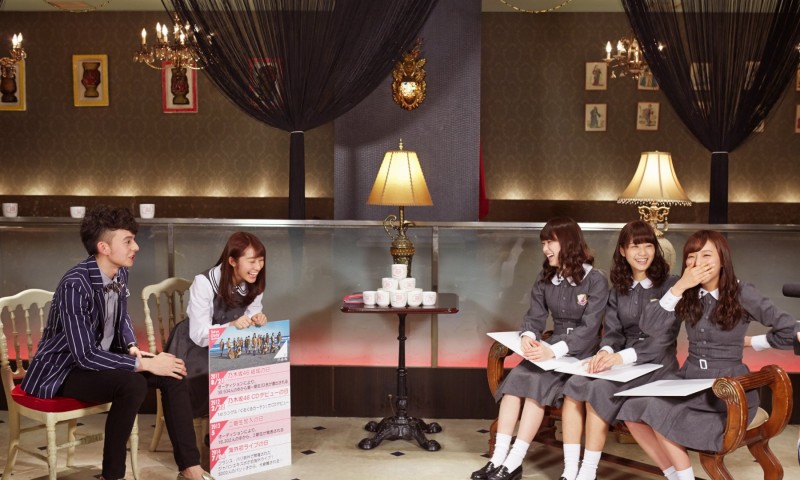
Tokyo Girls’ Update TV Episode 01
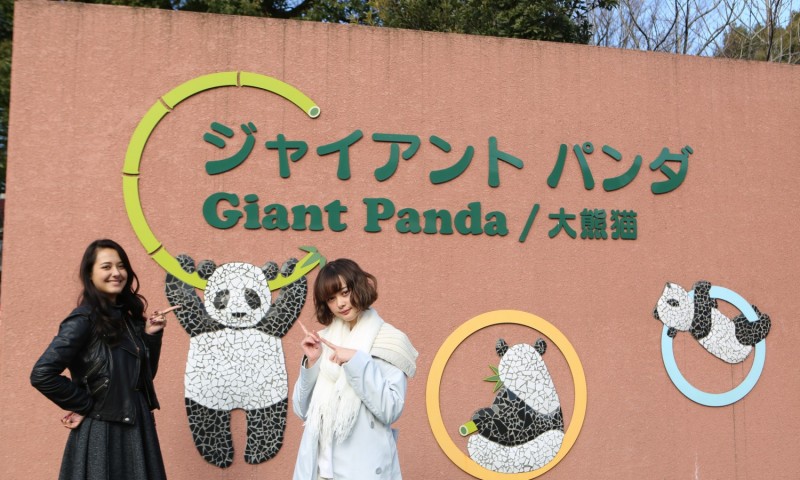
It wouldn’t be an exaggeration to say that if you love anime, you’ve surely heard at least one of Kalafina’s songs at some point.
アニメ好きなら必ずどこかで彼女たちの曲を耳にした事があるに違いない—と言っても過言ではないだろう。Kalafinaの曲は『魔法少女まどか☆マギカ』『Fate/Zero』『黒執事』など数々の有名アニメのOP・EDとなっており、国内だけでなく世界中から支持されている3人組ボーカルアーティストだ。2015年2月・3月に武道館2days公演を行うなど国内人気ももちろんだが、2010年に台北・上海・香港にて海外ワンマンを行ったり、以降L.A.、シンガポール、マレーシア、ドイツ、ジャカルタなど数々のアニメエキスポにも出演。2014年パリで開催されたJapan Expoではライブ会場に入場規制がかかるほどの注目度であった。2016年2月にはメキシコワンマンも控えている。
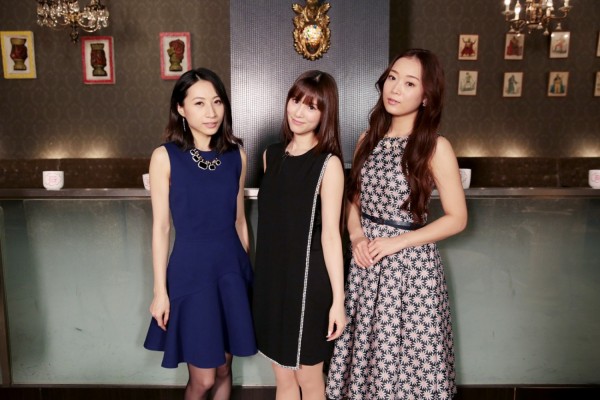
Kalafina made an appearance on Tokyo Girls’ Update TV, and were willing to let us interview them about some topics that we didn’t have time to discuss during the program.
そんなKalafinaさんにTokyo Girls’ Update TVに出演して頂いたのですが、番組内では話し切れなかった内容などについて、さらに掘り下げたインタビューをさせて頂きました。
– In 2014 you released a two-disc best album “THE BEST”, as well as the album “far on the water” in 2015, but was your train of thought different for each?
−2014年にベストアルバム『THE BEST』を2枚出し、2015年もアルバム『far on the water』をリリースされたと思うのですが、それぞれのタイミングで心境の変化などはありましたか?
Keiko: We released our best album last year with the concept of “how far we had come this way together”. We wanted to revisit our history once more, or more like, what kind of work we had been doing at the time the three of us debuted and how far we had come since, and by putting that into an album, we were able to reflect on it all. Additionally we wanted to dig deeper into each of our songs we’d done one by one, and in doing so our musical approach changed as well.
昨年は「それまでの自分たちの歩み」というカタチでベストアルバムを出させて頂きました。もう1度3人でデビューした時からの自分たちがどんな作品とどんな風に歩んで来たかという自分たちの歴史を、ベストアルバムを出させて頂く事で、振り返る事が出来ました。その上でもう1度、自分たちが今まで歌って来た曲を、改めて深く1曲1曲掘り下げて行こう、という様に、音楽的な取り組み方も変わっていきました。
From that heightened sense of awareness we produced far on the water, and during the production at the time of recording it we really felt like, “Oh, we were able to do this so naturally!” with the way we created a natural harmony, the way our voices came together, and the unison between us. So because of that, rather than putting a lot of thought into the recording during production, it felt like we were able to let each other’s singing voices weave together as one on their own. I was reminded again of how natural it all was. It’s surprisingly difficult to make it appear that way. In a song where the vocals switch and change, how to solidify three people’s voices into a single song is very difficult, but we were able to come to some realizations during the production process. We felt an inner bond between us, and for that we were very happy.
そんな意識が強くなった中でのアルバム『far on the water』制作だったので、制作の最中は自分たちが思ってた以上に、3人の間で自然とやっていたハーモニーの作り方や、声の合わせ方、寄せ方が、「ああ、こういうのって自然にやってたんだ!」というのがリアルにレコーディグの時に感じることができました。なので沢山考えぬいたレコーディング制作、というよりは、そのままお互いに紡いでいった歌声を感じながら制作した感じです。これってなんか自然なんだ、って再認識しました。できるようで意外と難しい事だったりもするので。ボーカルが入れ替わり立ち代わりする曲の中で、どうやって3人の声を1曲に固めていいくか、っていうのはとても難しい事なんですけれど、そういったことが、このアルバム制作の中で発見としてありました。自分たちの中ではそれが絆として感じられたので、すごく嬉しかったですね。
– I think all of Kalafina’s members put a substantial amount of detail into your vocals, but could you tell us if there’s something you try to keep in mind when you sing or any original voice training methods you use?
Kalafinaさんは皆さんボーカルということで声には相当こだわりがあると思うのですが、歌う時に心がけていることや、オリジナルのボイトレ方法などがあれば是非教えて頂けませんか?

Wakana: When the three of us practice, we have a way for us to create a three-voice harmony, and we’re always trying to incorporate that. I’d be sure to tell the others, for example, something like, “My voice sounds a little different today.” We always discuss things with each other like, “Today my voice is coming out a little lower than usual so I’ll try to hold back a little”, and then letting them hear my voice after explaining it in words so it’ll be clear to everyone, “that’s why today it kind of sounds like there’s an overall roundness to it” or, “If I try to sing a more strongly during the actual performance, I think this might happen.” It’s not just about singing. I think the way each member goes about care and training is different. In my case, I often sing soprano, so after I’ve finished singing, as a cool down I’ll keep sing the same note for five minutes, like a low “oooo” in my range, to cool down my throat.
3人で練習するときに、三声のハーモニーを作る時のやり方があって、それをいつもやっています。例えば、その中で、「ちょっと自分は今日は違う響きが出ちゃうな」、ってときはちゃんと自己申告しますね。「私、響きが今日低めに出ちゃうから、ちょっと弱めにしてみるね」とかをちゃんと言葉で伝えた上で声を出すと、「だから今日はちょっと全体的に丸みがあるんだね」とか全員が理解して作れるし、「本番はもっと強めに出すから多分こうなると思う」とか、とにかく話し合いはよくやりますね。声をただ出せばいいというわけではなくて。各々のケアとかトレーニングとかはメンバーそれぞれだと思うので。私は高音を歌う事が多いので、歌い終わった後に、クールダウンといって、自分の出せる範囲の低い声で「ウーーーーー」っという様に、ずっと一定の音を出す、ということを5分くらいやりながら、喉をクールダウンさせています。
Hikaru: I don’t have any particularly original voice training, and quite the opposite, I learn quite a lot from Wakana and Keiko. For example, when you sing you use your abs as well as your diaphragm, and in general you use many muscles. As part of voice training there’s an exercise where you breathe out while repeating “fu fu fu”, and if you keep up with it every day you’ll be able to hold notes for longer, which is something they taught me and I’ve put into practice.
オリジナルのボイトレは特になくて、逆に2人から教えてもらう事が多いです。例えば、歌う時って腹筋も使いますし、横隔膜も使いますし、とにかく色んな筋肉を使ってるんですね。それを鍛えるためのボイストレーニングで、「フッ、フッ、フッ」っと単発で息を出す訓練があるんですが、それを毎日続けたら音がもうちょっと伸びる様になるよ、という様な事を教えてもらって実践してます。
Keiko: People often tell us that our bodies are an instrument… and whenever we hear that we feel ourselves straighten up (laugh), but it really is true. When the three of us sing, depending on where our sound comes from– for example, the top of the head, the chest, or places like the nose or the chin on the face… Depending on where the our sound comes from, it changes the quality of our voice. So that we can get our sound to come our from whatever part of the body we want it to, we do considerable vowel training.
私たち、「体が楽器だね」と言って下さることがよくあるんですが……そう言われると自分たちも恐縮して背筋が伸びるのですが(笑)、でもそれは本当にそうで。3人で歌う時は、音を響かせる場所によって—例えば頭頂部なのか、胸なのか、顔だとしても鼻なのかアゴのあたりなのか……響かせる場所によって本当に響きが違ってくるんです。体の響かせる場所を響かせられるように、母音をしっかりトレーニングする、というのはやっていますね。
– Do you completely decide who is going to do which part, how and with what part of the body to sing from for this or that particular song?
「この曲は誰が、この部分で、どうやって、響かせる」というのが完璧に決まっているんですか?
Keiko: No, we don’t plan things out that far. When the three of us sing there’s a point where we feel it would sound nice for us to harmonize, and then one of us will say something like, “I’ll do this part,” and then, “Okay then I’ll do that part,” and that’s how we make it. We try to make our harmonies sound good, or to create a good tone quality that is pleasant on the ears, but that’s something the three of us come up with together. When the time comes all three of us will sing and we’ll find that sound together, and then do that kind of training over and over.
いえ、そこまできっちり決まっていないんです。3人で歌う時に、「ここで合わせると気持ちいいね」っていうポイントがあって、それで「じゃあ私はこっちがいいかな」「それなら私はこっちだね」というふうに、3人で作って行くんです。ハーモニーが気持ちよく響かせられる、耳の聴き心地の良い音色というのがあるんですけれど、それを3人で探すんです。その時に、3人で声の響かせどころを探す、というようなトレーニングは積み重ねています。
– Your bodies really are an instrument, then.
本当に「体が楽器」ですね。
Keiko: But if you say it like that it’ll really make us tense up. (laugh) Every day the condition of our bodies is different, so it’s important to keep from being shaky as much as possible. But since there’s three of us, if I’m not doing very well than Wakana or Hikaru can help me out, and so we support one another.
いえ、でもそう言われると本当に背筋が伸びます(笑)。体のコンディションって毎日違うので、できるだけブレないようにするっていうのはすごく大事で。でも3人いるので、自分がちょっと悪いときは他の2人が少し助けてくれたりするので、支え合っています。

– I see. You really can’t afford to be careless, then! Moving on, are there any placese or things you would recommend to foreigners visiting Japan?
なるほど。常に油断できないですね……! では、海外のファンの方が日本を訪れた時に、おススメしたい場所やモノなどが何かあれば教えて下さい。
Wakana: It would definitely be sushi! I love the restaurant chain Sushizanmai. (laugh) I go there a lot.
私、俄然、お寿司です! 「すしざんまい」が大好きで(笑)。ホントによく食べてます。
– What do you recommend there?
中でもどんなネタがおススメですか?
Wakana: They have something called an “aburi set”. It has cooked fatty tuna, cooked fin meat, and cooked salmon sushi. Also their toro-taku rolls! It has picked radish and fatty tuna. I also like their monkfish/goosefish liver! Fish is really delicious. Please give it a try!
「あぶりセット」っていうのがあって。あぶり大トロと、あぶりエンガワとあぶりサーモンが乗っているセットです。あとトロたく! たくあんとトロの巻物なんですけど。あと、あん肝も好きです! やっぱりお魚はいいですね。みなさんもぜひ食べてみてください!
Hikaru: Kyoto, naturally. It’s the best place to feel the atmosphere of Japan. Also, if you venture away from the cities and to the countryside, like where there are many isolated houses, I think you can get a taste of things that have a real Japanese flavor. Like with buildings that look different from those overseas, like temples and so on. If you really want to relax, I recommend the countryside over the city.
テッパンはやっぱり京都ですよね。やっぱり日本の趣を感じられる場所。あとは、意外と、都心より田舎の方に行くと、一軒家があったりとか、日本の風情みたいなものを味わえるんじゃないかな、と思います。海外とは違う建物の造りだったりとか。お寺とか。ゆったりしたいときは、都心よりは田舎がおススメですね。
Keiko: In that case, you can to Kyoto to really experience Japan and then go to Sushizanmai when you come back to the city. (laugh) If you do that, wouldn’t Shibuya be the place to go? It’s a spot I’d like everyone to visit! Even for us, it’s a place that changes so fast it dizzying. New buildings appear and others that were there disappear. It’s a place where you can really feel the era of today. It’s the source of all the latest trends. So I think it would be good to try standing in the middle of it. (laugh) I’d like everyone to try walking across the Shibuya scramble intersection.
じゃあ、日本の趣を感じられる京都に行き、そして都会に戻って来て寿司ざんまいに行き(笑)。とすると、やっぱり渋谷じゃないかな? 絶対渋谷はスポットとして行って欲しいです! だって私たちにとっても、渋谷ってめまぐるしく変わっていくなっていう印象があるし。新しいビルができたり、あったものがなくなったりとか。やっぱりその「時代」を感じられるんですよ、渋谷は。時代を感じられる場所だと思うんです。流行の発信源でもあるし。だから渋谷に立ってみるのがいいと思います(笑)。スクランブル交差点を歩いてみてほしい。
– Thank you for your suggestions. We definitely hope everyone will give them a try. Finally, what is something new you’d like to try as Kalafina?
ありがとうございます。是非行ってみて欲しいですね。それでは最後に、Kalafinaさんがこれから挑戦してみたい新しいこと、があれば教えて下さい。
Keiko: Of course I think making changes are important, but as far as Kalafina goes, we think “not changing” is important. There’s beauty in the things you keep doing and the things that don’t change, and within that we try challenge ourselves to make small changes or create small bursts of inspiration.
もちろん変化も大事だと思うんですけど、Kalafinaはどちらかというと「変わらない事」を大事にしています。やり続ける事、変わらないもの、の美しさがあり、その中での日々の小さな変化や刺激のなかでできることに挑戦しています。
When we meet artists who have different tastes in music from what we’re doing, we can learn from their singing methods and methods of appeal that we haven’t tried yet. In those instances we don’t just bring in those influences as they are, but always challenge ourselves to “express it in song in a way that reflects our own style”.
自分たちがやっている音楽とは違うテイストのアーティストさんに会って、自分たちがやってこなかった歌唱法や魅せ方を学んだりもします。そういったときに、そのまま取入れのではなくて「自分たちなら歌にどうやって表現できるか」っていうチャレンジは常にしていきたいと思います。
Related links
Kalafina official site : http://www.kalafina.jp/
Kalafina Twitter : https://twitter.com/kalafina_staff
Translated by Jamie Koide


